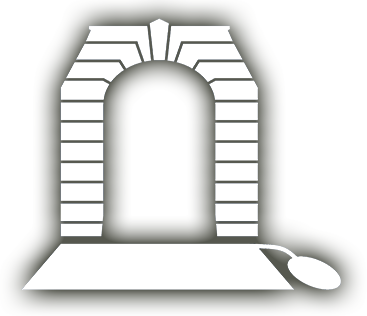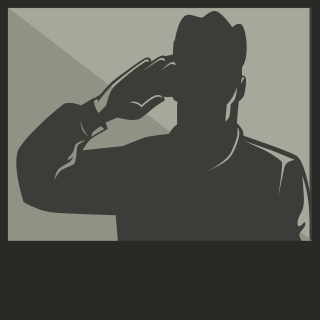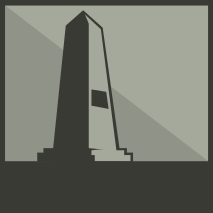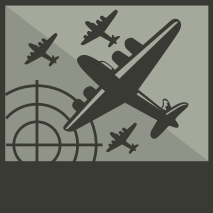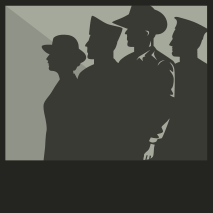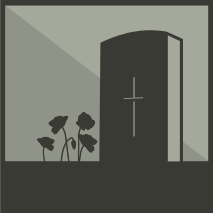HURST, Albert Edward
| Service Number: | 3657 |
|---|---|
| Enlisted: | 25 April 1917, Adelaide, South Australia |
| Last Rank: | Driver |
| Last Unit: | 43rd Infantry Battalion |
| Born: | Pewsey Vale, South Australia, 9 November 1898 |
| Home Town: | Lyndoch, Barossa, South Australia |
| Schooling: | Not yet discovered |
| Occupation: | Station hand |
| Died: | Natural causes, McLaren Vale, South Australia, 26 August 1981, aged 82 years |
| Cemetery: |
McLaren Vale (Congregational) Cemetery |
| Memorials: | Mount Crawford Roll of Honor, Pewsey Vale St. Thomas Church Roll of Honour |
World War 1 Service
| 25 Apr 1917: | Enlisted AIF WW1, Adelaide, South Australia | |
|---|---|---|
| 16 Jul 1917: | Involvement AIF WW1, Private, 3657, 43rd Infantry Battalion, Enlistment/Embarkation WW1 | |
| 16 Jul 1917: | Embarked AIF WW1, Private, 3657, 43rd Infantry Battalion, HMAT Port Melbourne, Sydney | |
| 24 Dec 1917: | Involvement AIF WW1, Private, 3657, 43rd Infantry Battalion | |
| 12 Aug 1918: | Wounded "The Last Hundred Days", GSW (nose) | |
| 17 Sep 1919: | Discharged AIF WW1, Driver, 3657, 43rd Infantry Battalion | |
| Date unknown: | Wounded 3657, 43rd Infantry Battalion |
Albert Edward Hurst
Albert Hurst was aways referred to as Bert.
After returning from the war, he started a blacksmith business in McLaren Vale, South Australia.
He lived 'in the Vale' until his death.
Submitted 22 April 2015 by Julie Morcom
Biography contributed by Faithe Jones
Albert was a blacksmith by trade. Among the tasks of the blacksmith, especially in those early years was the cueing of bullocks and the shoeing of the magnificent Clydesdale horses and stock horses. The making of the cues and horseshoes was a specialist’s job. Up to ten horses would be shod in a week, the hoofs cut cleanly and neatened in readiness for the hot shoes to be measured then cooled and nailed to the hoof. Many a time they were kicked by their charges, but there was an elaborate structure of rails, posts, and pulleys (crush pens) in the ‘smithy’ which kept the horses still. There was the repairing of farm implements and sharpening the points of the harrows worn down by use – the building and repairing of all types of wheels – the earliest of these would be largely of iron or steel. There was a special procedure used for fitting the steel tyre to the wooden wheel’s outer circle of the sulkies and buggies, also carts, drays, wagons and trollies. Wheels consisted of a central part of wood known as the hub attached with spokes to the outer circle of wood (felloe) and this outer circle was fitted with a tight iron or steel tyre. To have the tyre fitting neatly, it had to be heated to a very high temperature in a specially prepared firing pit. When really hot, it was then quickly fitted to the wooden felloe of the wheel, and cooled as quickly as possible on the tiring plate, thus causing it to shrink and fit tightly. Care had to be taken that the wheel didn’t catch alight. The making of galvanized water tanks was another craft the blacksmith specialized in, also pig and poultry troughs.
Albert served in the 43rd Battalion of the 1st AIF. The family lived in Tatachilla Road, McLaren Vale.
Ethel and Albert had three children Margaret Betty born 24th March, 1925, Joan Doreen born 23rd November, 1928 and a son Eric Lindsay born 27th November, 1930. Unfortunately Eric was born with Infantile Spastic Paraplegia and only survived 2 days.
Ethel died on the 28th July at her residence Tatachilla Road, McLaren Vale, aged 58 years of Coronary Thrombosis, Hypertension and was buried at the Congregational Cemetery McLaren Vale.
Her husband Albert died at Southern Districts War Memorial on the 26th of August 1981 and the funeral left his daughter's residence 8 Field Street, McLaren Vale for St. Margaret of Scotland Church Cemetery McLaren Vale.
Biography
Born: 9 November 1898 in Pewsey Vale, near Lyndoch, South Australia
(SA Birth record 1842 - 1906 Book: 631 Page: 34 District: Cra.)
Father Joseph HURST. Mother: Elizabeth (nee FRANKCOM)
living at Pewsey Vale, Lyndoch, South Australia.
With written permission from both parents he enlisted in the AIF (signed on 27/6/1917).
Described on enlisting as 18 years 4 months old; 5' 8 1/4" tall; 127 lbs;
fresh complexion; hazel eyes; brown hair; Church of England.
***AWM do not have an 'Embarkation form' for Albert, although his Attestation
papers hold details of his enlistment and embarkation.***
25/4/1917 Enlisted in Adelaide, South Australia
in B Company, Mitcham Camp
1/5-19/6/1917 with C Company, Mitcham Camp
12/7/1917 Commanding Officer appointed Albert to 10th reinforcements
48th Infantry Battalion, Mitcham Camp
16/7/1917 Embarked Sydney on board HMAT A16 Pt Melbourne,
as a Private with 43rd Infantry Battalion
The battalion were in Britain for further training.
15/9/1917 disembarked into Liverpool, England
17/9/1917 marched in to Codford
22/9/1917 sick - mumps, admitted to Casualty Clearing Station
7/10/1917 marched out to unit
Joined 12th Training Battalion in Codford.
18/12/1917 Private proceeded overseas to France, ex Southampton,
to reinforce 43rd Infantry Battalion
19/12/1917 marched in to AIF Base Depot, Havre, France
24/12/1917 taken on strength into 43rd Battalion in the field
The battalion arrived on the Western Front in late December.
The battalion spent much of 1918 fighting in the Somme valley.
In April 1918 they helped stop the German Spring offensive at Villers-Bretonneux.
18/5/1918 sick with influenza, admitted to hospital
20/5/1918 admitted with 'trench fever' to 7th Canadian General Hospital, Etaples, France
6/6/1918 admitted to Base, Etaples, France
13/6/1918 rejoined 43rd Battalion, in the field
In July the battalion was part of General Monash's attack at Hamel.
In August the battalion helped drive the Germans back to the Hindenburg Line.
12/8/1918 gun shot wound to nose, France
admitted to 53rd Field Ambulance
13/8/1918 transferred to 21st Australian Hospital
29/10/1918 to Base Depot, France
3/11/1918 rejoined 43rd Battalion
The 43rd joined the advance that followed the 2nd Division's victory at Mont St Quentin.
3-17/12/1918 On leave in UK
19/12/1918 rejoined unit
4/2/1919 Appointed Driver, 43rd Battalion
3/5/1919 marched into Base, for return to Australia
3/5/1919 reverted to Private on return to Australia
14/5/1919 sick with Measles - admitted to No.4 General Hospital, Codford, England
7/6/1919 discharged to Training Depot, Sutton Veny
4/7/1919 Embarked on board Wiltshire, ex England for return to Australia
16/8/1919 disembarked into Adelaide
17/9/1919 discharged from service in AIF
Medals:
British War medal (20849) and Victory medal (20351)
Married: Ethel Ruth Hurst (b. 1901 - d. 28/7/1959 - 58yrs)
Children: Margaret, Joan and Eric
1968 was living at Tattachilla Road, McLaren Vale, South Australia.
26/8/1991 Albert passed away (82 years old)
buried in: McLaren Vale (Congregational) Cemetery
8 Tatachilla Road, McLaren Vale, South Australia
(buried with his wife Ethel)
Sourced and submitted by Julianne T Ryan. 20/4/2015. Lest we forget.

